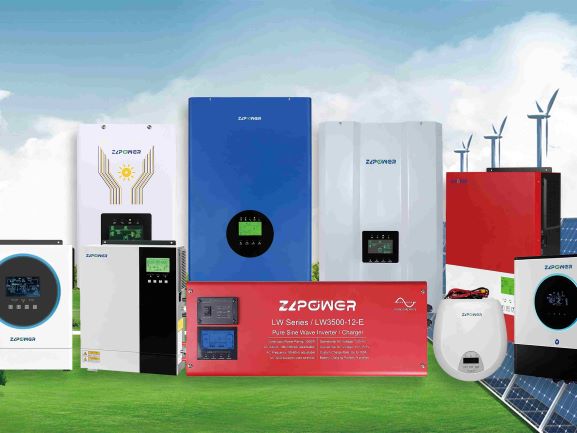

Dealing with inverter cutouts sucks if you‘re running solar panels or a backup power setup. Basically, the inverter just quits on you or drops the connection to your devices because of some glitch inside or outside. It‘s super frustrating when this hits during a blackout or when you need power bad. Getting to the bottom of why it‘s happening helps you keep things running smooth.
Blowing off these cutouts can wreck your gear, kill your battery early, or leave you powerless right when you need juice the most. And if it keeps happening, it‘s waving a red flag about bigger troubles that might trash your whole power rig if you wait too long.
People often jump to conclusions and blame a defective unit. Truth is, stuff like cramming too much load on it, crappy wiring, or battery headaches usually cause the drama. Solid inverters from ZLPOWER—a high-tech outfit cranking out UPS gear, power inverters, and solar ones—are made sturdy. But they still need you to treat ‘em right and keep up with maintenance.
Overload kicks in when your devices suck up more power than the inverter can dish out. Picture firing up a ton of power-hungry stuff all at once—boom, it‘s overwhelmed.
The inverter might bail as soon as you add another gadget. You‘ll hear beeps, see error lights flashing, or codes popping on the screen. Some even dial back voltage before calling it quits.
Here‘s how to dodge overloads:
· Tally up the watts from everything you‘re running.
· Stay under your inverter‘s max rating.
· Grab one with plenty of headroom, like the Pure Sine Wave Inverter Charger in 1KVA-12KVA sizes—it fits all kinds of setups.
It happens when a hot wire brushes up against neutral or ground—maybe from beat-up insulation or sloppy setup. That floods the system with current, and the inverter hits the brakes to avoid a fire.
Sniff for burning odors, watch for sparks, check for popped fuses, or look at scorched spots. Smarter inverters flash a specific error code to clue you in.
· Bring in a pro electrician for the install.
· Eyeball your cables now and then for frays or wear.
· Lock down connections and wrap ‘em properly to keep wires apart.

Your batteries keep the whole show going. If they‘re low on charge, gunked up with corrosion, or just worn out, the inverter freaks and cuts out. ZLPOWER‘s batteries pack a punch with tons of stored energy, but they ain‘t immortal without care.
Heads up for:
· Inverter dying minutes after boot-up.
· Low battery buzzers or warnings.
· Backup time shrinking fast.
· Swollen cases or crusty terminals.
· Give batteries a once-over regularly.
· Wipe terminals clean and snug ‘em tight.
· Ditch the old ones when their time‘s up.
· Pick tough ones like the EL series 48V lithium pack—good for 3,500 cycles, so you replace less often and save cash.
Loose or busted wires make power sputter and voltages bounce. The inverter‘s sensors get spooked, thinking there‘s trouble, and shut everything down just in case.
Lights might flicker, your stuff runs iffy, or you hear humming near plugs or boxes.
· Stick to code-approved wires.
· Make sure every screw and clamp is solid.
· Don‘t mess with dodgy extension hacks.
· Go for pro-level setups that add extra safeguards and run better.
Solar inverters kick off heat while working hard. Cram ‘em in a stuffy corner, block the breeze, or park ‘em in the sun, and they overheat fast. Built-in safeties kick in to save the guts from frying.
It feels hot to the touch, fans (if any) scream non-stop, or you get temp overload alerts.
· Set it up where air can flow freely.
· Shade it from direct rays.
· Clear space around vents.
· Tough models like the PVM Plus off-grid inverter have dust-proof tricks, great for dusty or tight spots.
.jpg)
Main triggers for your inverter bailing? Overloads from gadget overload, shorts from wiring fails, battery woes like weak volts or rust, shaky connections messing with flow, and heat from no breeze.
Poking around regularly spots issues before they blow up. That means steady power and dodging big repair bills.
Can‘t shake the cutouts? Smell smoke or errors won‘t quit? Call in an electrical whiz who handles this stuff safely.
Want rock-solid gear with certs like ISO9001, ISO14001, and ISO45001? ZLPOWER delivers solar inverters with smart MPPT tech, UPS for finicky devices, and batteries that last forever—ideal for home or work.
A: Sure—damp air, dust piles, or wild temps can trigger cutouts. Wetness eats at parts, dust chokes fans and causes heat buildup. Stick it in a dry, dust-free, even-temp zone to stay safe.
A: You bet. Stale updates or bad configs can trick the inverter into thinking something‘s wrong, leading to surprise shutdowns. Refresh the software often and tweak settings to fit your rig.
A: Yeah, zaps from storms or grid hiccups can fry the protections and force a cutoff. Hook up a surge guard or stabilizer to shield it from those nasty spikes.